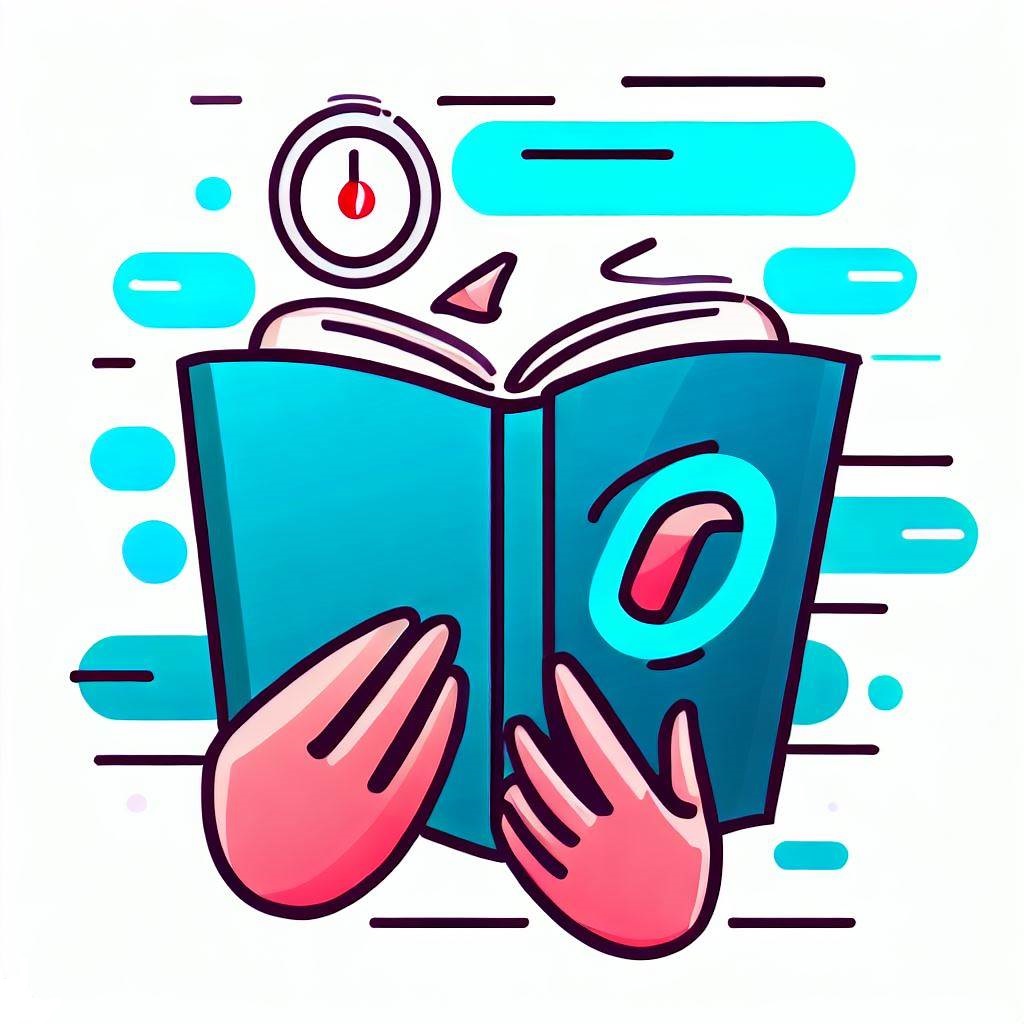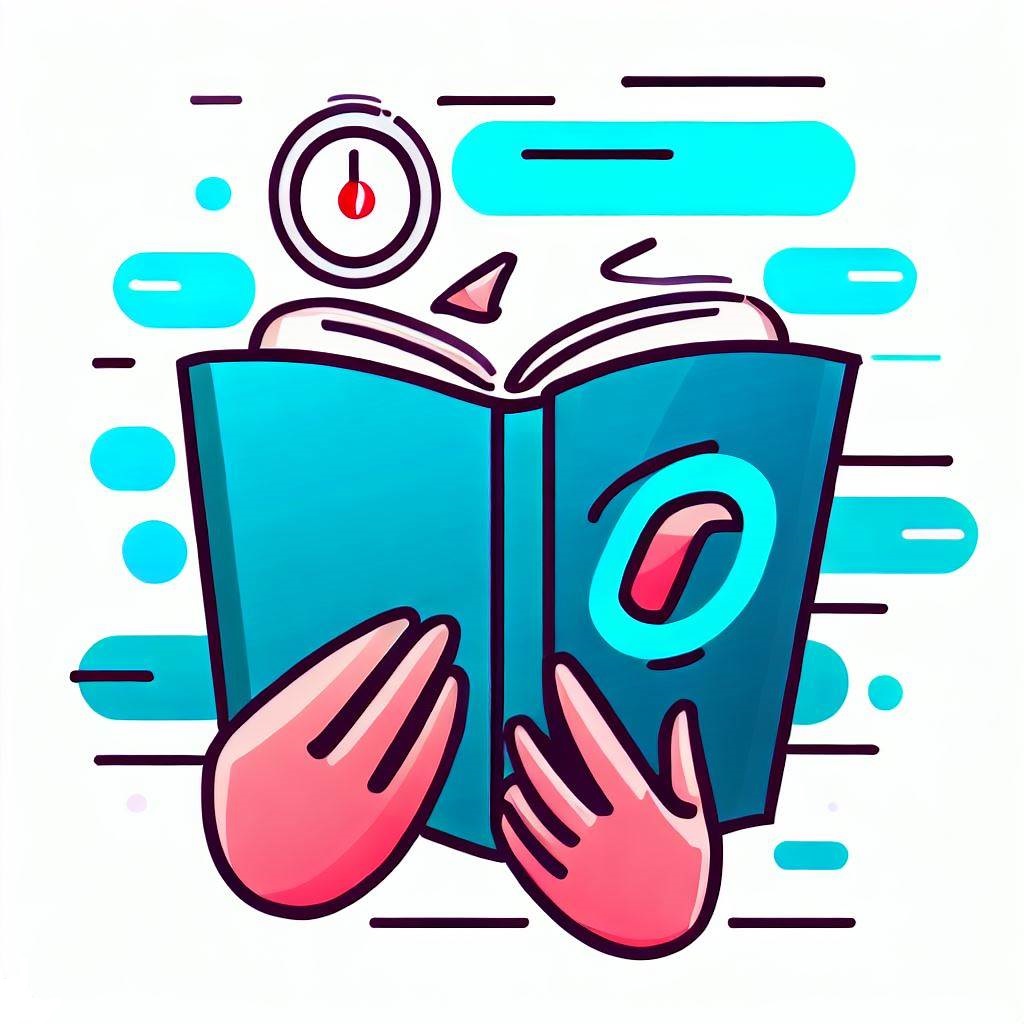
The Art of Speed Reading: Unlocking the Power of Rapid Comprehension
Published by John Taylor on Mon Aug 21 2023
Learn how you can implement speed reading techniques to triple your reading words per minute
Do you find your bookshelf cluttered with books you’ve never had the chance to read? Is the lack of time holding you back from exploring those intriguing volumes? If so, you’re not alone. Many people face this dilemma, but fear not, as we are about to unveil the secrets of speed reading. Whether you’re a student hoping to absorb large volumes of text, a professional seeking to stay informed, or simply an avid reader looking to enhance your reading experience, mastering speed reading can revolutionize the way you consume information and open up new horizons of knowledge.
What is Speed Reading?
Speed reading is a technique that allows individuals to increase their reading speed while maintaining comprehension and retention. By utilizing various strategies and exercises, speed reading can help you process information more efficiently, saving you valuable time and effort.
Imagine being able to breeze through lengthy reports, academic texts, or even novels in a fraction of the time it would normally take. With speed reading, you can quickly scan through the material, identify key points, and grasp the main ideas without getting bogged down by unnecessary details. This article is an 11 minute read for the average reader but imagine if you could finish it in 3 minutes with the same level of comprehension.
Not only does speed reading enhance your productivity by enabling you to cover more material in less time, but it also improves your overall understanding of the content. By training your brain to absorb information at an accelerated pace, you develop better focus and concentration skills. This heightened level of attentiveness allows you to engage with the text more effectively and retain crucial information for longer periods.
How Does Speed Reading Work?
Speed reading techniques are based on the concept that our brains are capable of processing information at a much faster rate than we typically read. The average person reads at a rate of about 200 to 300 words per minute, while our brains can process information at a rate of up to 1000 words per minute or more.
Speed reading techniques help us bridge this gap by training our eyes to move faster across the page and by utilizing our peripheral vision. By reducing the number of fixations (the pauses we make while reading) and increasing the number of words we read per fixation, we can significantly increase our reading speed without sacrificing comprehension.
Establish Your Baseline Reading Speed
Reading speed is measured in words per minute. To calculate your baseline reading speed, start by timing yourself and reading at your normal speed for 1 minute. Be sure to mark where you started and stopped during that one minute. Count the average number of words on three lines of the pages you just read and multiply the number of lines you finished by the average number of words on a line to determine how many words you can read in one minute. Now that you know your baseline, you can start to improve.
Doubling, Tripling, or Quadrupling Your Reading Speed
The average person reads at a rate of 200 to 250 words per minute. However, there’s no reason why you can’t significantly increase this rate by following some straightforward steps:
 blog_speed_reading
blog_speed_reading1. Strategic Pre-Reading
- Table of Contents: Start by reading the table of contents to gain an overview of the book’s structure.
- Reviews and Summaries: Explore book reviews and chapter summaries as they often highlight key points and the author’s main ideas. This prepares your brain to focus on the most critical elements during your reading journey.
2. Silence Your Inner Voice
One of the primary obstacles to reading faster is subvocalization, where your inner voice articulates every word you read. Subvocalization, while a natural part of the reading process for many individuals, can indeed hinder reading speed. The act of mentally pronouncing each word as we read not only slows down our pace but also limits our overall reading comprehension and retention. Therefore, overcoming subvocalization is crucial for those seeking to read faster and more efficiently.
One effective strategy to combat subvocalization is through the practice of silent reading. By consciously training ourselves to read without vocalizing the words internally, we can significantly increase our reading speed. This technique involves visually scanning the text and absorbing the meaning directly from the words rather than relying on auditory processing.
Another helpful approach is utilizing visualization techniques while reading. Instead of focusing on each individual word, try picturing concepts or ideas conveyed by groups of words or sentences. This method encourages your brain to process information holistically rather than getting caught up in articulating every single word mentally. Even if you do this quietly, it can slow down your reading speed considerably. Some people even chew gum to prevent themselves from subvocalizing.
- Technique: Focus on reading groups of words or phrases at a time rather than individual words. Train your eyes to move smoothly across the text without the need for inner vocalization.
3. The Power of Music
Studies suggest that listening to music, especially classical compositions like Mozart or Beethoven, while reading can enhance your reading speed. Listening to music, particularly classical compositions like Mozart or Beethoven, while reading has been found to have a positive impact on reading speed for several reasons. Firstly, classical music is known for its soothing and calming effect on the mind. When we are relaxed and in a peaceful state, our concentration and focus tend to improve. This enhanced mental state allows us to absorb information more efficiently while reading.
Moreover, classical music often lacks lyrics or vocals, which can be distracting when trying to concentrate on written text. By eliminating these distractions, we can direct our full attention towards the words on the page, leading to improved comprehension and faster reading speed.
Additionally, classical compositions are often characterized by their complex structures and intricate melodies. Listening to such music engages our brain in a unique way, stimulating various cognitive processes simultaneously. This heightened brain activity can enhance our overall cognitive abilities, including memory retention and information processing speed.
4. Guided Eye Movement
One of the most crucial aspects of speed reading is controlling your eye movement. Visual regression is the enemy of speed reading. It’s the phenomenon where your eyes backtrack and re-read words you’ve already scanned. To combat this, employ the finger technique:
- Finger Guidance: As you read, use your finger, a pen, a pencil, or even a marker to trace the text.
- As you move your finger or implement a marker, ensure your eyes follow it without unnecessary backtracking. This simple act forces your eyes to follow a linear path, preventing them from bouncing back and slowing your progress.
5. Seeing Groups of Words
One of the core techniques in speed reading is utilizing your peripheral vision. Think of it as widening your reading horizon. Instead of fixating your gaze from the beginning to the end of each line, focus on the center of the text and use your peripheral vision to absorb the words on the sides. It’s akin to a cranial nerve exam, where you’re aware of movement in your peripheral vision while maintaining central focus.
A vital skill in speed reading is training your eyes to see beyond individual words. Instead of fixating on each word separately, aim to perceive groups of words as cohesive units. For instance, the phrase “Statue of Liberty” should register as a single concept rather than three separate words.
By training your eyes to see beyond individual words, you can significantly increase your reading speed and comprehension. When you read, your brain naturally processes words in groups or phrases rather than focusing on each word individually. This is known as chunking, and it allows you to grasp the meaning of a sentence or passage more efficiently.
When you first start practicing speed reading, it may feel challenging to break the habit of fixating on individual words. However, with consistent effort and practice, you can develop the ability to perceive groups of words as cohesive units. This skill enables you to capture the main ideas and key information more rapidly.
Imagine reading a sentence like: “The quick brown fox jumps over the lazy dog.” Instead of reading it word by word, try to view it as chunks: “The quick brown fox” and “jumps over the lazy dog.” By doing so, your eyes will move smoothly across the text without unnecessary pauses between each word.
6. Efficient Paragraph Scanning
To read faster without sacrificing comprehension, employ the art of paragraph scanning:
- First and Last Sentences: Begin by reading the first sentence of each paragraph. It sets the stage for what follows.
- Skim the Middle: Glide through the middle content, capturing the essence without scrutinizing every word.
- Last Sentence Recap: Conclude by reading the last sentence of the paragraph, as it often summarizes the key points.
This approach helps you extract the main ideas while swiftly navigating the content.
7. Push Your Limits
The final step in your speed reading journey is to challenge your own limits. Push yourself to read faster than you think possible. Your brain is a remarkable organ capable of handling much more than you give it credit for. By surpassing your perceived boundaries, you’ll find yourself reading at speeds you never thought achievable.
8. The Power of Visualization
Visualization is the key to maintaining comprehension at elevated reading speeds. Reading faster does not mean that you have to sacrifice understanding. Rather than mechanically scanning the text, strive to create a mental image of the content. Whether it’s visualizing molecules in a scientific text or picturing the scenarios in a novel, this technique enhances your comprehension and makes the reading experience more vivid.
By visualizing the content, you engage your imagination and tap into the power of your mind. Instead of simply processing words, you are actively constructing a mental representation of the information. This process not only helps you understand and remember what you read but also allows you to make connections and draw insights that might otherwise go unnoticed.
When reading scientific texts, visualizing molecules or complex concepts can bring them to life. You can imagine their intricate structures, how they interact with each other, or even visualize their behavior in different scenarios. This visualization technique enables you to grasp abstract ideas more easily and comprehend the underlying principles.
Similarly, when diving into a novel or any fictional work, visualization transports you into the story’s world. You can picture the characters’ appearances, their surroundings, and their emotions. By creating vivid mental images, you immerse yourself in the narrative and experience it as if watching a movie in your mind. This not only enhances your enjoyment but also deepens your understanding of the characters’ motivations.
9. Assessing Your Progress
In the quest to become a proficient speed reader, it’s crucial to gauge your progress. Knowing your current reading speed acts as a compass guiding you forward. Now, use the same method as before to see how much your reading speed has already improved just by implementing these simple techniques. As you progress, you can continue to track the growth in your reading speed. So, fasten your seatbelt and prepare to embark on this exhilarating journey into the world of speed reading. The adventure has only just begun, and your books are waiting to be devoured at an astonishing pace.
Be Selective in Your Reading Choices
Don’t feel compelled to finish every book you start. Many people believe that they must complete every page of a book, but this mindset can hinder your reading progress. If a book doesn’t engage you or you find it unhelpful, put it down and move on to something more captivating. It’s essential to be discerning about the books you invest your time in, focusing on those that truly interest and benefit you.
Schedule Your Reading Time
Finding time to read can be challenging in our busy lives, but it’s not impossible. You can incorporate reading into your daily routine, such as during your commute, lunch breaks, or even at the gym. By dedicating just 30 to 60 minutes a day to reading, you can make significant progress in your book consumption. Consistency is key, and even a moderate reading pace can result in finishing dozens of books each year.
Read More Than One Book at a Time
Reading multiple books simultaneously may seem counterintuitive, but it can be an effective strategy. It prevents boredom and keeps your reading experience fresh. You can categorize your books based on complexity or genre, ensuring that you always have something to suit your mood and interest. This approach can help you maintain your attention and enthusiasm for each book.
Remembering What You Read
Finally, let’s address the challenge of retaining what you read. Instead of relying on extensive note-taking or highlighting, focus on implementing the ideas you encounter in your daily life. Discussing these concepts with others can reinforce your memory. Additionally, don’t stress over remembering every detail; it’s more important to remember where you read specific information. This way, you can easily refer back to the source when needed.
Conclusion
Speed reading is a skill that can unlock a world of knowledge and reduce the burden of an ever-growing bookshelf. By following these proven techniques and pushing your reading boundaries, you’ll find yourself devouring books faster than you ever thought possible. So, embark on your speed reading journey and open the doors to a wealth of knowledge waiting to be explored. Happy reading!
